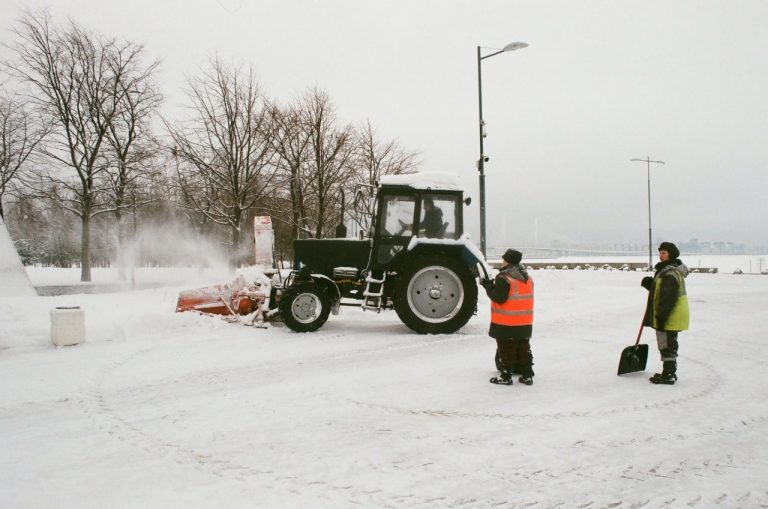What is Deicing Salt?
Deicing Salt is used on icy surfaces to reduce the melting point of water and prevent ice formation. This process includes; plowing and continual application of chemicals and abrasives.
Deicing salt works as a savior for people living in regions that face frequent snowfall and snowstorms. It is proven universally as an effective method for preventing weather-related collisions.
The weather conditions in winter can affect traveling because of ice, leading to dangerous situations. Blocked highways, bridges, parking lots; deicing salt got your back.
Deicing salt is the process of removing snow from roads once it has bonded to the pavement. This situation is combated by De-Icers that lower the freezing point of water and prevent the bonding between ice and pavements by melting the ice and preventing its formation. In this process, plowing and continual application of chemicals and abrasives are also involved.
The process of plowing is followed when more than an inch of snow has accumulated on the road. Calcium chloride and sodium chloride are used for deicing after they are transformed into a dry form.
Uses of Deicing Salt:
Deicing Salt is the most reliable agent to mitigate risks in extreme cold weather. Be it, parking lot, airport pavement, bridges or walkways; snow hits unbiasedly.
Deicing salt is used on Roadways, Airport pavement, Aircraft and Trains. It also works as a pesticide in summers.
Amazing Benefits of Deicing Salt:
Deicing salt is one of the most pocket-friendly product for roadways. It helps prevent collisions, injuries, and highway fatalities, which is why many states rely heavily on deicing salt in winter.
Since it is easy to store deicing salt in bulk for long periods without losing its melting capabilities, people stay well prepared in winters. It is also relatively easy to spread, which definitely makes life easier.
Road Conditions:
Dump trucks and snowplows are used to spread salt on slick roads for the deicing of roads. For this; Sodium chloride (rock salt) is usually used as it is inexpensive and easily available in large quantities. This helps in minimizing road accidents.
Aircrafts:
The deicing of aircraft is a common practice in situations when precipitation and freezing conditions are on the ground. The vehicles aerodynamic properties are interfered with by the frozen contaminant, and the engines could be damaged by dislodged ice. So, to protect the metal surface, Deicing fluids consisting of glycol-water solution are used. A range of glycols is used to enable the deicing agent to adhere to the airplane body.
Trains and Rail Switches:
Deicing salt also assists in trains and rail switches in arctic regions for the removal of ice. A constant heat source is needed to assure functionality on cold days. On trains, heaters are primarily used on suspension, brakes, and couplers for deicing. These high-powered electrical heaters efficiently prevent ice formation and perform a rapid action in melting any ice that forms.
Bulk Deicing Salt:
Bulk buying deicing salt can keep you prepared and help you in unexpected heavy snow. It also doesn’t cost you an arm and a leg. HubSalt bulk deicing salt provides solutions to all your winter (snow) problems.
Pesticide:
The bag of deicing salt that has been resting in your store can impressively work as a pesticide in hot seasons. It can be sprinkled on cracks in pavements/sources of ants, making sure the area is dry before deicing salt.
How to make Salt Brine For Deicing Salt?
Many people are still wondering about how to make salt brine for deicing the snow from the roads:
- Take hot water and deicing salt in a portion of 3:1 in a spare bucket
- Stir the mixture properly, making sure the deicing salt and water mix properly (Put on gloves/mix it with a spatula or spoon)
- Apply the prepared mixture
Safety Measure to Consider In Usage:
When Deicing salt is used carefully, it has a low environmental impact.
There are variable effects and benefits of deicing salt on vegetation which is dependent mainly on species. Some plants are highly salt-tolerant, while others can be badly affected, so it is better to have a piece of knowledge about salt-sensitive plants before applying deicing salt.
Also, effective road planning can lessen the chances of deicing salt getting mixed with groundwater.
Moreover, chlorides can contribute to metal corrosion. The modern design of vehicles and taking into account the deicing activity in building and designing road structures have helped lower the impact of corrosion.

